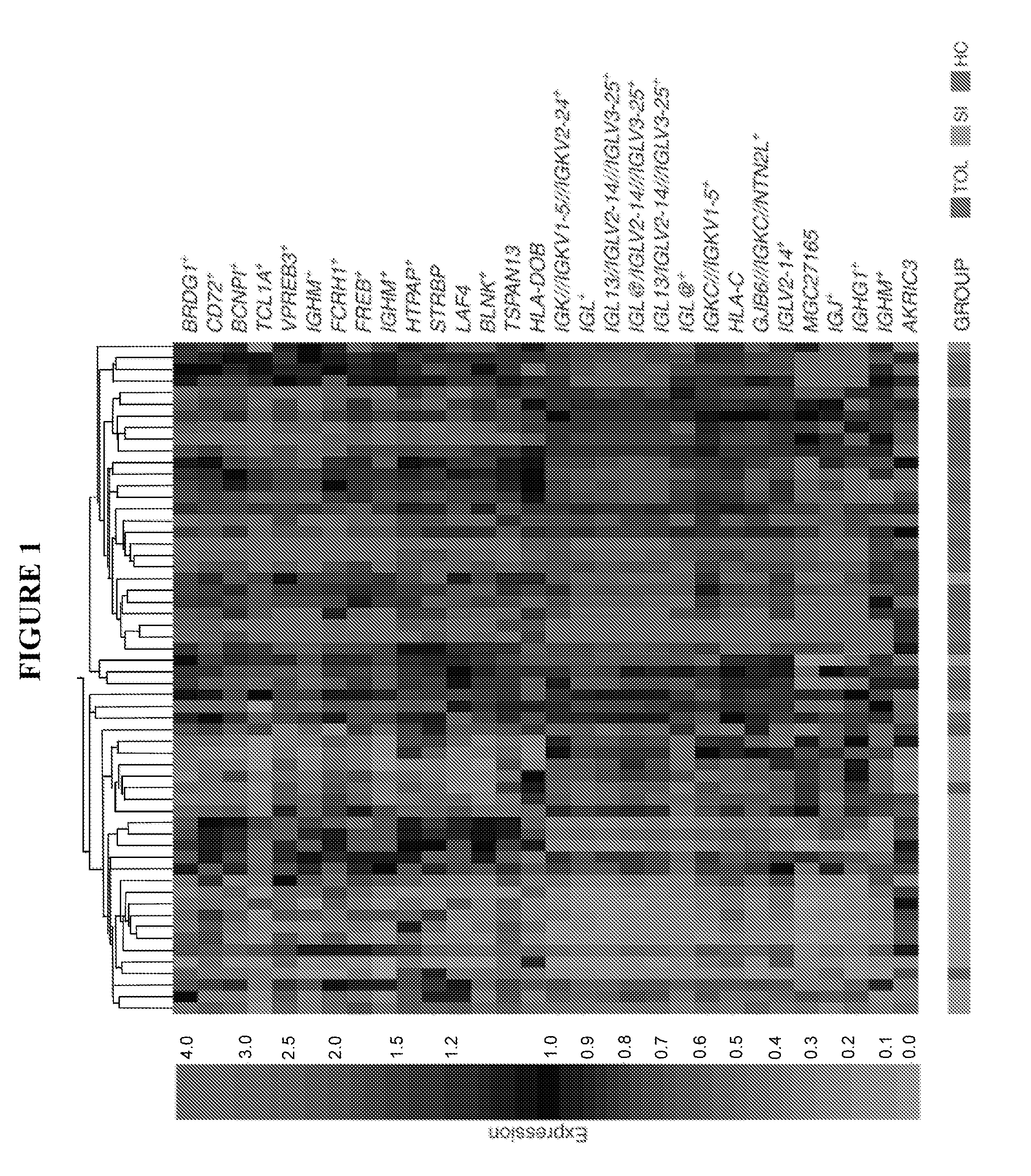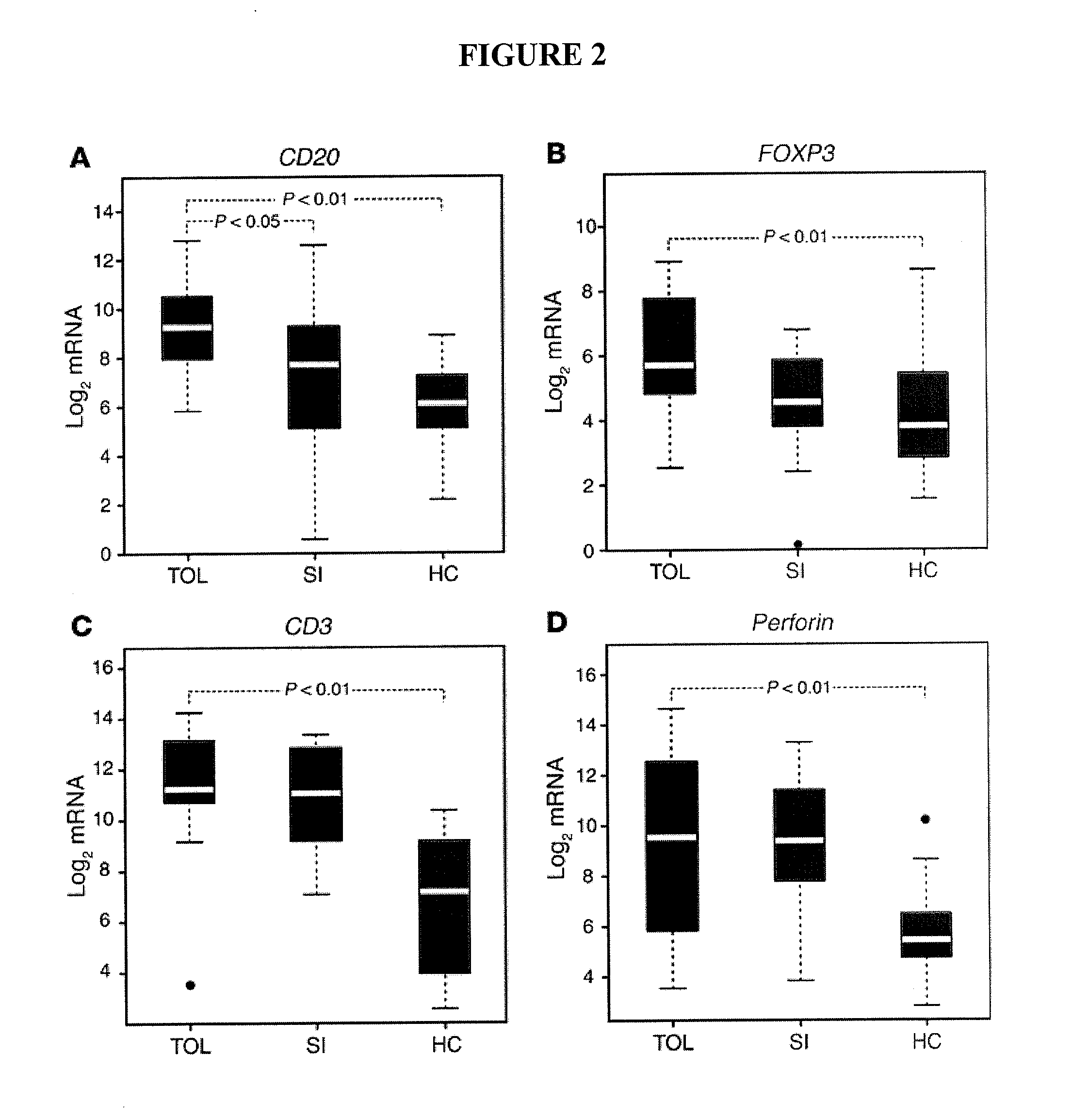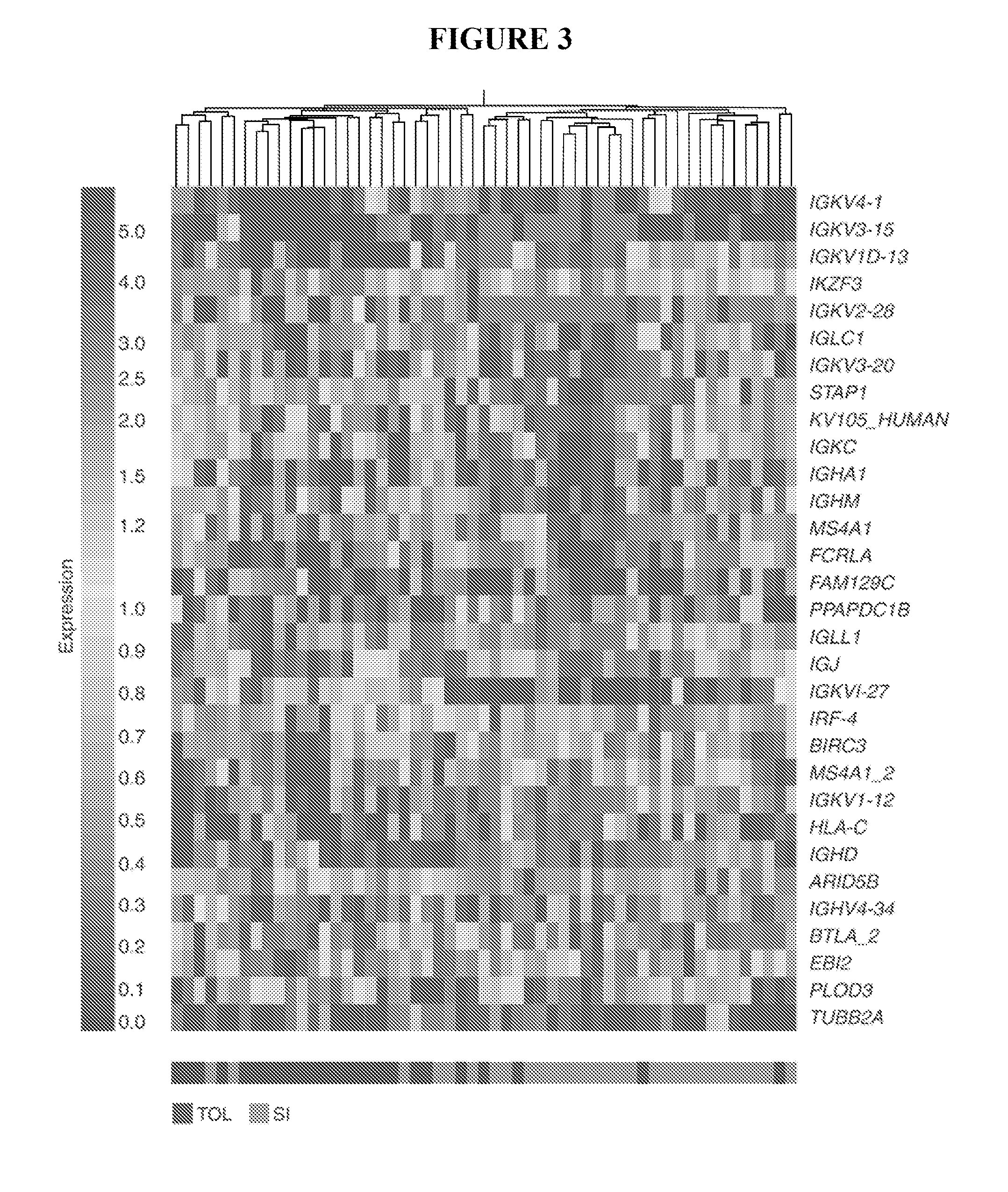B cell signature associated with tolerance in transplant recipients
a technology transplant recipient, which is applied in the field of b cell signature associated with tolerance in transplant recipients, can solve the problems of inability to achieve similar improvements in long-term outcomes, inability to achieve life-long regimens of immunosuppressive drugs, and inability to induce long-term allograft tolerance in humans
- Summary
- Abstract
- Description
- Claims
- Application Information
AI Technical Summary
Benefits of technology
Problems solved by technology
Method used
Image
Examples
example 1
Clinical Features of Study Populations
[0138]Participants in the TOL and SI groups had excellent renal function even though TOL participants had ceased taking immunosuppressive medications for at least 1 year. Ages, genders and primary diseases leading to renal failure were similar between the two groups (Table 4).
TABLE 4StandardTolerant TrainingTolerant TestImmunosuppressionDonor Age in Years49 (41-70)56.5 (47-66)52.5 (31-69)median (range)Donor Type4 Cadaveric1 Cadaveric8 Cadaveric14 Living (related)3 Living (related)14 Living (related)1 Data Missing1 Living (unrelated)9 Living (unrelated)1 Data Missing2 Data MissingGender12 Male3 Male18 Male7 Female3 Female15 FemaleRace18 White6 White28 White1 Asian4 Black or AfricanAmerican1 AsianRecipient Age in Years51 (27-77)51 (42-63)44 (26-75)(median and range)Primary Cause of Renal10.5% Post-streptococcal16.7% Cystic / Polycystic12.1% Hypertension (4)Failure (number ofGlomerulonephritis (2)Kidney Disease (1)12.1% IgA Nephrophathyindividuals)15...
example 2
B-Cell Gene Signatures Distinguish Tolerant Participants from Stable Participants on Continued Immunosuppression
[0140]TOL and SI groups were divided into two sets each. Tolerant patients were divided into a training set (TOL-TRN, N=19) and a test set (TOL-TST, N=6) based on their time of enrollment. Similarly, the SI cohort was divided into a training set (SI-TRN, N=27) and a test set (SI-TST, N=6). For microarray analyses, only samples from the TOL-TRN and SI-TRN were used. Affymetrix Genechips® were used to detect expressed gene profiles of whole blood total RNA from subjects in the TOL and SI groups. Statistical analysis for differentially expressed genes between these two groups was performed and the top differentially expressed genes were ranked in order, based on their mean fold change differences.
[0141]Five unique genes (TUBB2A, TCL1A, BRDG1, HTPAP and PPAPDC1B) reached statistical significance after a false discovery rate (FDR) correction was applied to the data. Both TCL1A ...
example 3
Multiplex Real Time PCR Confirms B-Cell Gene Signature and Identifies Three Genes which Predict Tolerance
[0144]MassARRAY QGE was performed on all TOL, SI and HC participants to develop a more quantitative approach for defining tolerance-specific expressed gene profiles and to support our microarray findings. Probe-primer sets for 228 genes were made for the MassARRAY QGE which was run on all participants (Table 3). Clustering of the MassARRAY QGE data (FIG. 3), revealed 31 unique genes that were statistically significantly different between the TOL-TRN and SI-TRN groups (FIG. 3 and Table 5). P value adjustments (p values <0.05) were made using false discovery rate (FDR) correction to account for multiple comparisons. Using the FDR correction, no genes were significantly different between TOL and HC. However, observed differences without the FDR correction are disclosed in Table 5.
TABLE 5Genes differentially expressed ranked by p-value.TOL vs. SITOL vs. HCGeneGeneIGKVID-13IGKVID-13FC...
PUM
| Property | Measurement | Unit |
|---|---|---|
| Digital information | aaaaa | aaaaa |
| Fraction | aaaaa | aaaaa |
| Fraction | aaaaa | aaaaa |
Abstract
Description
Claims
Application Information
 Login to View More
Login to View More - R&D
- Intellectual Property
- Life Sciences
- Materials
- Tech Scout
- Unparalleled Data Quality
- Higher Quality Content
- 60% Fewer Hallucinations
Browse by: Latest US Patents, China's latest patents, Technical Efficacy Thesaurus, Application Domain, Technology Topic, Popular Technical Reports.
© 2025 PatSnap. All rights reserved.Legal|Privacy policy|Modern Slavery Act Transparency Statement|Sitemap|About US| Contact US: help@patsnap.com



